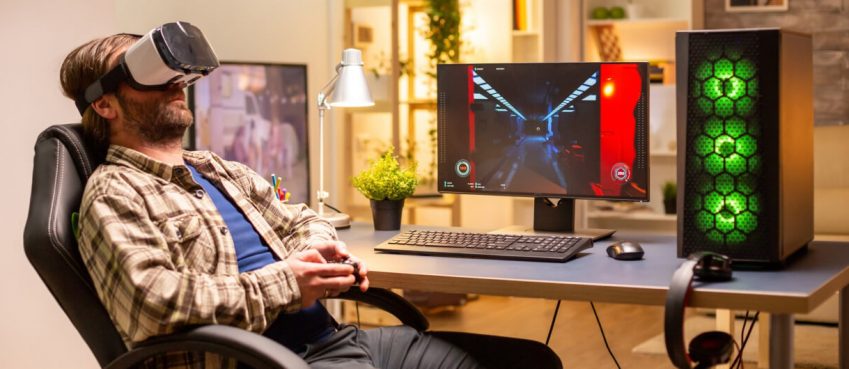
Best Wireless Router
If you live in an unusually large house, you might want to consider a Wi-Fi router that can effortlessly cover the entirety of your residence.
Why? Well, imagine watching your favorite game live on your tablet or smartphone, and things are heating up towards the end.
You decided to grab a quick drink in the fridge, and as you enter the kitchen, the winning shot is just about to go down – then it freezes.
Welp, there goes the Wi-Fi signal and wifi speed test, and you prevented from seeing the epic match-winning score live.
Buying Guide – best wireless router for home
Keep in mind that routers all come in various models, each with varying degrees of speed, range and features. Understanding the best type of router for a particular home will guarantee optimum performance on all levels.
Note that there are two specific types of routers in the market – private or home use and professional-grade routers.
The difference between the two can be quite staggering, but so is the price. As the name implies, home use routers are typically affordable and provide moderate to excellent speeds and a multitude of features but with a relatively smaller signal range.
As for professional-grade routers, these are heavy-duty units that can support dozens of connected devices simultaneously while maintaining blistering speeds.
Pro routers also have a considerably more extensive range and can easily cover large establishments quite easily.
To help you along the way, here are vital factors you need to consider if you are looking for a wireless router to cover large residences:
-
Looking for a Reputable Brand Name is a Good Start
Brand recognition is always an excellent way to get your bearings if you are unsure where to begin your search for a wireless router.
Manufacturers such as Linksys, Netgear, and Asus are three of the names you will regularly see among the list of top routers so best to start looking at their catalogue first.
It would be best if you also acquainted yourself with important router terminologies.
For example, a good rule of thumb nowadays is to always look for routers that use AC 1200 or higher-tech to ensure you are up to date with the current wireless standards today.
The digits you see after AC indicates the maximum throughput that the router can deliver.
In this case, 1200 means 1,200Mbps which is not only quite fast but is also powerful enough to accommodate multiple devices at the same time without any noticeable slowdowns.
Also read: DDR4 vs DDR5: Tech Differences, Latency Details, Benefits & More (A Complete Guide)
-
Hardware Features Are Just as Important
Most manufacturers tend to focus on the speed and range of the routers when it comes to marketing.
The thing about that is those numbers don’t typically reflect the actual performance since numerous factors can affect those digits.
The smart way to go about here is by treating the promoted speed as the maximum the unit can deliver but only in an optimized setting.
While knowing those numbers are all good and well, you should also consider hardware features that come along with the router.
The reason for this is simple – hardware features will always have an integral part to play in regards to the router’s overall performance.
For example, household nowadays tends to have numerous devices that will require internet connectivity.
To ensure that everyone will be able to experience optimum and smooth connection, a router with at least a dual-core processor built-in is a must.
Never settle for a single-core processor as carries a lot of technical issues with it and can be infuriatingly unstable in worst-case scenarios. So, remember – go for dual-core or quad-core processors.
Additionally, it would be best if you looked for routers with RAM that offer 130MB and above as these will be able to handle almost all necessary task with ease.
-
Importance of Antenna, MU-MIMO Support, and Beamforming Technology
To further optimize the range of wireless routers, three critical elements must be presents: a quality antenna, beamforming technology, and MU-MIMO support.
Combined, all three can significantly enhance the overall range of the signal and optimize internet speed throughout the household.
The antenna is pretty self-explanatory and is a crucial part of any device that operates via signals. What boosts its performance is via the technology implemented, namely the MU-MIMO support and Beamforming.
MU-MIMO stands for Multi-User Multiple Input Multiple Output which allows for several devices/clients to connect at the same time without disrupting with each other.
If you live in a household where more than a handful of users are expected to be active at the same time, go for routers with MU-MIMO support.
As for Beamforming technology, it is an excellent feature that will help boost the performance of your router’s signal. Routers with Beamforming detect the location of the device that is currently connected to the router.
It will then increase the signal towards the direction of these devices rather than spreading the Wi-Fi equally within a radius.
The results speak for themselves as Wi-Fi routers with Beamforming technology can optimize the range of the signal quite effectively.
Find out more about Wifi extender vs booster
Also read: Top 10 AI Infrastructure Companies In The World
Best Long-Range Wireless Routers in the Market Today
To help you further narrow down your choices, we have compiled three of the best-selling and highest-rated routers that provide an excellent range. We also considered the price range in compiling this list. Check out our picks below:
-
Best Overall Pick: ASUS RT-AC88U
You can always count on ASUS to deliver excellent products, and the ASUS RT-AC88U continues this tradition.
This beast uses 1024-QAM technology which gives it excellent speeds and stability. This router is also feature-rich and boasts speeds of up to 2,600Mbps (5GHz) and 1,000Mbps (2.4GHz) with its dual-band technology.
-
Best Budget Pick: Linksys EA6350-EJ Dual-Band AC1200
If you are looking for a long-range router that is budget-friendly, I highly recommend you check out the Linksys EA6350-EJ with its 1,000 square feet max range and the ability to support up to 10 devices simultaneously.
The dual-band technology allows for speeds of up to 1.2Gbps (2.4GHz and 5GHz combined) and is an excellent choice for streaming and online gaming at a budget.
-
Best High-End Pick: NETGEAR Nighthawk X10
With 2,500 square feet range a tri-band wireless technology in tow, the NETGEAR Nighthawk X10 is one of the best routers around that money can buy at the moment.
The tri-band technology ensures excellent speeds and stability while the addition of Beamforming and MU-MIMO support further boosts its overall performance.
It is also jam-packed with features to warrant that high price tag. If you have the cash and want the best, consider this fantastic entry from NETGEAR.
Top 10 News
-
01
Top 10 Deep Learning Multimodal Models & Their Uses
Tuesday August 12, 2025
-
02
10 Google AI Mode Facts That Every SEOs Should Know (And Wha...
Friday July 4, 2025
-
03
Top 10 visionOS 26 Features & Announcement (With Video)
Thursday June 12, 2025
-
04
Top 10 Veo 3 AI Video Generators in 2025 (Compared & Te...
Tuesday June 10, 2025
-
05
Top 10 AI GPUs That Can Increase Work Productivity By 30% (W...
Wednesday May 28, 2025
-
06
[10 BEST] AI Influencer Generator Apps Trending Right Now
Monday March 17, 2025
-
07
The 10 Best Companies Providing Electric Fencing For Busines...
Tuesday March 11, 2025
-
08
Top 10 Social Security Fairness Act Benefits In 2025
Wednesday March 5, 2025
-
09
Top 10 AI Infrastructure Companies In The World
Tuesday February 11, 2025
-
10
What Are Top 10 Blood Thinners To Minimize Heart Disease?
Wednesday January 22, 2025







